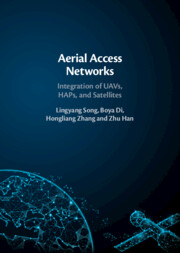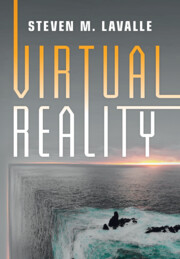Refine listing
Actions for selected content:
9096 results in Communications, Signal Processing and Information Theory
7 - HAP-Reserved Communications in Space-Air-Ground Integrated Networks
- from Part III - HAP Communication Networks
-
- Book:
- Aerial Access Networks
- Published online:
- 19 October 2023
- Print publication:
- 02 November 2023, pp 169-182
-
- Chapter
- Export citation
12 - Evaluating VR Systems and Experiences
-
- Book:
- Virtual Reality
- Published online:
- 12 October 2023
- Print publication:
- 02 November 2023, pp 293-319
-
- Chapter
- Export citation
5 - The Physiology of Human Vision
-
- Book:
- Virtual Reality
- Published online:
- 12 October 2023
- Print publication:
- 02 November 2023, pp 107-128
-
- Chapter
- Export citation
Contents
-
- Book:
- Virtual Reality
- Published online:
- 12 October 2023
- Print publication:
- 02 November 2023, pp vii-x
-
- Chapter
- Export citation
Index
-
- Book:
- Aerial Access Networks
- Published online:
- 19 October 2023
- Print publication:
- 02 November 2023, pp 329-330
-
- Chapter
- Export citation
9 - Ultra-dense LEO Satellite Constellation Design
- from Part IV - Satellite Communication Networks
-
- Book:
- Aerial Access Networks
- Published online:
- 19 October 2023
- Print publication:
- 02 November 2023, pp 233-266
-
- Chapter
- Export citation
4 - Light and Optics
-
- Book:
- Virtual Reality
- Published online:
- 12 October 2023
- Print publication:
- 02 November 2023, pp 82-106
-
- Chapter
- Export citation
Preface
-
- Book:
- Virtual Reality
- Published online:
- 12 October 2023
- Print publication:
- 02 November 2023, pp xi-xiii
-
- Chapter
- Export citation
Part III - HAP Communication Networks
-
- Book:
- Aerial Access Networks
- Published online:
- 19 October 2023
- Print publication:
- 02 November 2023, pp 133-134
-
- Chapter
- Export citation
Dedication
-
- Book:
- Virtual Reality
- Published online:
- 12 October 2023
- Print publication:
- 02 November 2023, pp v-vi
-
- Chapter
- Export citation
Frontmatter
-
- Book:
- Virtual Reality
- Published online:
- 12 October 2023
- Print publication:
- 02 November 2023, pp i-iv
-
- Chapter
- Export citation
Acknowledgments
-
- Book:
- Virtual Reality
- Published online:
- 12 October 2023
- Print publication:
- 02 November 2023, pp xiv-xiv
-
- Chapter
- Export citation
2 - Aerial Integration
- from Part I - Basics of Aerial Access Networks
-
- Book:
- Aerial Access Networks
- Published online:
- 19 October 2023
- Print publication:
- 02 November 2023, pp 9-18
-
- Chapter
- Export citation
13 - Frontiers
-
- Book:
- Virtual Reality
- Published online:
- 12 October 2023
- Print publication:
- 02 November 2023, pp 320-339
-
- Chapter
- Export citation
Index
-
- Book:
- Virtual Reality
- Published online:
- 12 October 2023
- Print publication:
- 02 November 2023, pp 364-374
-
- Chapter
- Export citation
Image Credits
-
- Book:
- Virtual Reality
- Published online:
- 12 October 2023
- Print publication:
- 02 November 2023, pp 357-363
-
- Chapter
- Export citation
6 - Cooperative HAP and LEO Satellite Schemes for Data Collection and Transmission
- from Part III - HAP Communication Networks
-
- Book:
- Aerial Access Networks
- Published online:
- 19 October 2023
- Print publication:
- 02 November 2023, pp 147-168
-
- Chapter
- Export citation
Part I - Basics of Aerial Access Networks
-
- Book:
- Aerial Access Networks
- Published online:
- 19 October 2023
- Print publication:
- 02 November 2023, pp 7-8
-
- Chapter
- Export citation

Aerial Access Networks
- Integration of UAVs, HAPs, and Satellites
-
- Published online:
- 19 October 2023
- Print publication:
- 02 November 2023

Virtual Reality
-
- Published online:
- 12 October 2023
- Print publication:
- 02 November 2023
